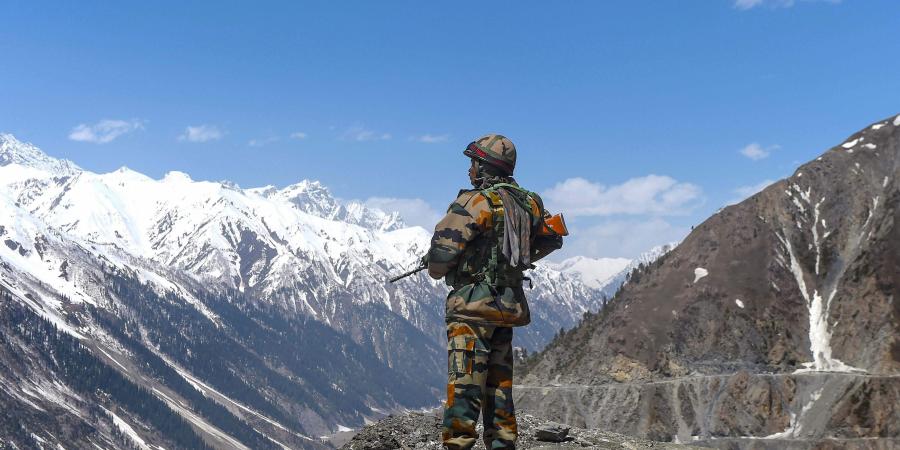The Government of China has insisted the People’s Liberation Army will hold its existing positions along the Line of Actual Control in Ladakh through the winter, government sources familiar with ongoing diplomatic dialogues have told News18, ruling out the possibility of any territorial adjustments in military-to-military negotiations expected to take place later this month.
Faced with the prospect of a protracted stand-off between massed forces on either side of the LAC, the sources said, New Delhi has authorised an emergency military acquisition programme that could run to over $1 billion.
The Army’s crash acquisition programme, aimed at equipping it to fight a war with China that lasts up to a month, is focused on building stockpiles of critical war material. These include fin-stabilised ammunition for India’s T-72 and T-90 tanks, ordnance for various types of artillery, Israel-built Spice air-to-air missiles, Heron drones, and SiG716 infantry rifles.
Faced with the need to equip more than 50,000 troops in Ladakh — five times the normal deployment — the Army is also purchasing large stocks of extreme weather clothing, shoes, portable heaters and tents, this month.
“The Chinese strategy is to lock India into a ruinous confrontation that runs for months or even years, but without actual war-fighting,” said strategic affairs expert Manoj Joshi.
Yun Sun, a China scholar at the Stimson in Washington, also offered a pessimistic prognosis, telling MoneyControl that on “complete disengagement and complete withdrawal, I am not particularly confident”.
“Given the huge difference of scale between the two economies, this will obviously impose unequal costs on India,” Joshi said.
Last year, Chief of Defence Staff General Bipin Rawat warned that it “benefits China to compel India to maintain troops in forward locations, since such a large deployment involves a lot of money and logistics.
Dangerous Deficits:
Experts have long raised concerns over large-scale deficits in critical military equipment, with the Comptroller and Auditor General reporting that, in 2016, stocks of 55% of all types of ammunition were not sufficient to last 20 days of war-fighting, and 40% inadequate to last for 10 days. The delays, some analysts believe, were the consequence of former Defence Minister AK Antony’s refusal to fast-track acquisitions, for fear of corruption allegations.
In a 2019 interview, General Rawat revealed that the Army had made progress in addressing those deficits, building up reserves adequate for an intense but brief war with Pakistan. “If we can’t win a war with Pakistan in 10 days, there is no point of a war”, he said.
The then-Army chief said, however, that the Army had also begun the process of building a stockpile that could enable a longer, 30-day war with China. “You won’t believe the amount of visits the officers have undertaken in markets across the world,”, General Rawat added.
Little information is available on how much progress had been made on expanding India’s reserves to meet the demands of a 30 day war, but a senior Government official said troops on the LAC were “well-equipped to face any situation that might arise”.
“Emergency acquisitions have had to be made every time there has been a crisis, from the Siachen build-up to the Kargil war and on”, notes Joshi. “Vendors know we are desperate, and charge ridiculous prices. Worse, our adversaries get insights into our weaknesses from our own shopping-lists”.
“The Government and the Army need to ask themselves some very hard questions about why we keep getting into this mess”, Joshi said.
Strategic Stalemate:
Last week’s meeting between Foreign Ministers S Jaishankar and Wang Yi yielded a commitment that “border troops of both sides should continue their dialogue, quickly disengage, maintain proper distance and ease tensions”. There was no mention, though, of restoration of the status-quo, or even respect for the Line of Actual Control—both elements of a similar dialogue between National Security Advisor Ajit Doval and Yi earlier this summer.
Following the talks, intelligence sources said, Indian troops have reported a build-up of Chinese forces along the LAC in Arunachal Pradesh, with fresh forces arriving across the frontier in Asaphila and the so-called Fish Tail area—regions where, according to Member of Parliament Tapir Gao, China already occupies disputed territory.
In Parliament on Tuesday, Defence Minister Rajnath Singh flagged the wide differences in India and China’s perception on the course of the LAC—a critical complication in the negotiations.
“The Chinese are basically saying that wherever they are is the LAC and that there’s nothing to discuss”, a senior Government official said. “The best we can expect in military-to-military talks”, he added, “is some tactical agreements to separate troops where they are deployed in dangerous proximity”.
New Delhi had, earlier this month, authorised the Army to occupy tactically-significant heights north and south of Pangong Lake, in the hope of compelling the PLA to trade these positions for territories they captured in April—denying Indian patrols access to the LAC in the Depsang Plains and the north bank of Pangong.
The new deployments of troops facing in Arunachal Pradesh, one intelligence official said, could be a counter-move, designed to compel India to commit greater resources along the eastern stretches of the LAC, as well.
“PLA commanders aren’t thinking the same way India does about territory”, one intelligence official said. “Their aim isn’t to capture some hills or ridges, but to use their their resources to coerce us into accepting their status as the preeminent power in the region”.




